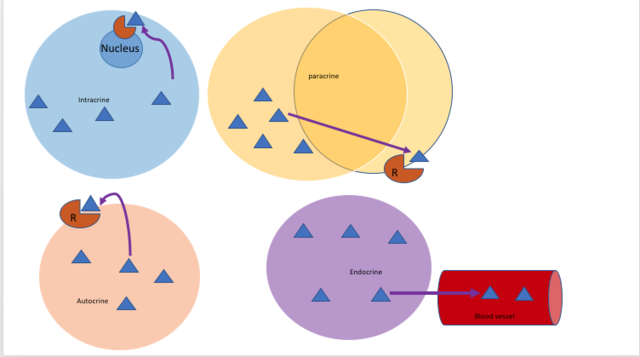Reference




OpenAI's Answer
Intracrine peptide hormones are unique in their mode of action, which occurs intracellularly, meaning that the hormone exerts its effects within the same cell in which it is synthesized. This is distinct from other hormone activities that typically involve secretion into the bloodstream and acting on distant target cells.
Here’s how the biological effect of intracrine peptide hormones is produced:
-
Synthesis: These hormones are synthesized within a cell. Unlike traditional hormones that may be secreted externally to act distantly, intracrine hormones remain within their cell of origin.
-
Intracellular Action: The biological effects of these hormones are confined to the inside of the producing cell. They may influence various cellular processes by interacting with intracellular receptors or participating directly in cellular biochemical pathways.
-
Receptor Binding: Some intracrine hormones may bind to specific intracellular receptors, initiating a cascade of events that lead to changes in cellular function or gene expression.
-
Process Modulation: These actions can include modulation of cellular growth, differentiation, metabolism, or survival, depending on the specific hormone and the cell type.
For a deeper understanding and examples of intracrine cells and mechanisms, you may refer to scientific resources like ScienceDirect and PMC.
Useful Links:
Visual Explanation:

This image illustrates the concept of hormone binding within cells, although typically shown for water-soluble hormones, it helps to understand intracellular signaling mechanisms generally.
If you have more specific questions or need further assistance, feel free to ask!
Follow Up
Related
What are the biomarkers found in naturally occurring petroleum and how do they indicate biological o
How do biomarker chemicals suggest the inclusion of biological material in oil?
What major contributions did Aristotle make to the field of biology?
What contributions has Ian A. Graham made to plant molecular biology?
What evidence exists to support the presence of biological molecules from bacteria in oil?